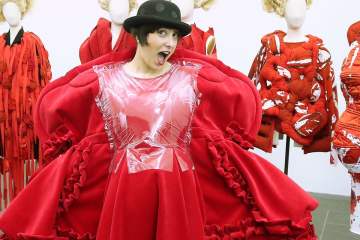Roy Halston Frowick, recognized simply as Halston, holds a unique position within the annals of American fashion. Initially gaining recognition in the 1960s as a gifted hat designer, Halston achieved widespread fame for crafting the memorable pillbox hat donned by Jacqueline Kennedy during John F. Kennedy’s 1961 inauguration. Nevertheless, his transition into women’s apparel truly enabled him to establish the groundwork for what would become an enduring heritage. Halston’s designs embodied modernity, fluidity, and subtle elegance—characteristics that reshaped the American style and permanently altered the course of the fashion sector.
Minimalism as Innovation: The Language of Simplicity
Before Halston, haute couture ruled American fashion, and excessive embellishment was synonymous with luxury. Halston broke with these traditions, introducing a minimalist approach that celebrated the body and eschewed superfluous detail. His hallmark was the bias-cut dress—a garment that not only followed the contours of a woman’s body but seemed to liberate it. Using fabrics such as ultrasuede, jersey, and chiffon, Halston produced garments that floated, moved, and breathed with those who wore them. This revolution in fabrication and form underscored a new functional luxury, one characterized by wearability and elegance.
Many fashion chroniclers point to Halston’s 1972 ultrasuede shirtwaist dress as a pivotal event. Its straightforward design, washable material, and accessible elegance appealed to all societal levels, achieving sales in the tens of thousands. By infusing comfort into high-end fashion, Halston paved the way for all subsequent trends in American sportswear and minimalist design, impacting creators from Donna Karan to Calvin Klein.
The Halstonettes: Diversity and Representation
Perhaps no other designer of his era cultivated a more inclusive image than Halston. His atelier and social circle, dubbed the “Halstonettes,” reflected a progressive vision for representation in fashion. He dressed a multicultural coterie of models and muses—such as Pat Cleveland, Alva Chinn, and Beverly Johnson—years before the industry’s wider embrace of diversity. Halston’s shows, often staged in intimate settings or at the Pierre Hotel, foregrounded these women’s personalities and grace, projecting a new and relatable ideal of beauty to the world. This approach not only amplified emerging supermodels but also set a cultural precedent for diversity as essential to fashion’s vibrancy.
The Studio 54 Period: Reshaping Opulence and Star Status
The collaboration between Halston and the vibrant nocturnal scene of Studio 54 during the late 1970s is iconic. He grasped the influence of connection, skillfully blending haute couture with the world of famous personalities. Adorned in his creations, luminaries such as Liza Minnelli, Bianca Jagger, and Elizabeth Taylor personified a coveted way of life linked to liberation, indulgence, and allure. Halston’s apparel became emblematic of the disco period—flowing, sparkling, and alluring, ideally suited to the captivating after-dark ambiance of that era.
This convergence of brand and celebrity would shape American fashion for many years. Contemporary designers often view Halston as the quintessential example of establishing a lifestyle brand inextricably linked to entertainment, renown, and media.
Commercial Innovation: Licensing and the Genesis of Lifestyle Branding
Beyond mere aesthetics, Halston blazed a trail in the realm of licensing, establishing a novel framework for brand growth. A pivotal moment arrived in 1983 with his groundbreaking $1 billion licensing agreement with J.C. Penney, marking a monumental transformation. Halston became the inaugural prominent designer to introduce haute couture to the mass market, foreshadowing today’s partnerships between upscale brands and retail behemoths like Target or H&M.
However, the inherent dangers of widespread licensing became evident as Halston’s elite clientele turned away from the designer, perceiving his move as a “descent into the mass market.” This ultimately led to his removal from his own brand—a situation often referenced in business education as a cautionary example. Consequently, Halston’s professional journey serves as a crucial case study on the intricate equilibrium between maintaining exclusivity and achieving broad appeal in fashion branding.
Contemporary Reverberations: Halston’s Enduring Impact
Today’s fashion world—steeped in minimalism, inclusivity, celebrity, and democratized luxury—traces much of its DNA to Halston’s breakthroughs. The resurgence of archival Halston garments on red carpets, the cinematic adaptations of his life, and continuous homages from leading American designers indicate a robust, evolving relevance. Brands increasingly embrace the lessons Halston taught: the value of quality refinement, the potency of media synergy, and the imperative of representing diverse customers.
Fashion’s shifting landscape, toward both sustainability and accessibility, owes a debt to Halston’s early advocacy for functionality without compromise. His aesthetic persists in the draped gowns of emerging designers; his business strategies echo in modern collaborative collections; his belief in diversity has become not just celebrated, but expected.
Halston’s Enduring Signature
Halston’s story is that of a visionary who anticipated—and frequently precipitated—each wave of transformation in American fashion. His minimalism offered freedom; his democratization of luxury fostered inclusivity; his marketing ingenuity redefined what a fashion label could achieve. The garments he created were more than trends; they became enduring symbols of self-assurance and American modernity. In the continuum of fashion’s evolution, Halston’s contributions remain a source of inspiration and instruction, resonating across generations and reminding us of the enduring power of simplicity, inclusivity, and innovation.




